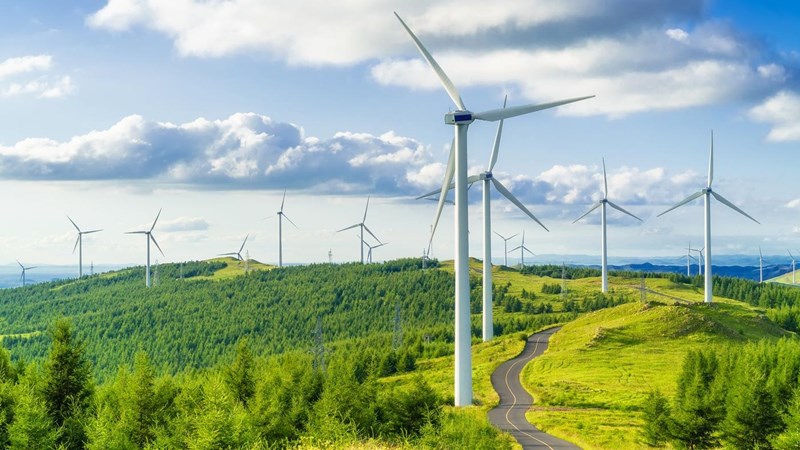COP29: frequently asked questions
From Paris Agreement goals to why COP29 has been billed 'the finance COP'
Welcome to our COP29 FAQ page
We’ve compiled answers to your most frequently asked questions about the event. Learn what’s on the agenda, why this conference is so important, and how global leaders will negotiate climate finance and the future of the Paris Agreement. Stay informed and get the answers you need as the conference unfolds.

COP29, Azerbaijan, 11 to 22 November 2024
The COP29 conference on climate change will take place Baku, Azerbaijan, from 11 to 22 November 2024. But what is COP, why is it such an important event in the energy calendar – and what’s on the agenda? Read on for an overview.
COP, or the Conference of the Parties, is a critical global event in the fight against climate change. It stems from the United Nations Framework Convention on Climate Change (UNFCCC), initiated three decades ago during the Rio Summit. Each year, member countries come together to discuss and determine the world's climate ambitions, and responsibilities, and evaluate climate measures.
The 21st session of the COP, known as COP21, resulted in the historic Paris Agreement. This pivotal accord aimed to limit global warming to 1.5 °C above pre-industrial levels, emphasising the need for urgent action. It was adopted at the conference in Paris in December 2015 and entered into force in November 2016.
COP28, in Dubai, was an organisational success. The sheer scale of the event signalled the global interest – over 100,000 attended, compared with about 10,000 at Kyoto in 1997 – with virtually every country and interest group represented.
One big takeaway was the concluding statement, which called for “transitioning away from fossil fuels in energy systems, in a just, orderly and equitable manner, accelerating action in this critical decade, so as to achieve net zero by 2050”. While for many this statement doesn’t go far enough it is at least significant as the first time the governments of the world have agreed on a goal to reduce consumption of oil, gas and coal.
Another takeaway is that the global stocktake that concluded at Dubai was a reality check. No major country is on track to meet the most ambitious Paris Agreement emissions reductions goals. A course correction is necessary.
Read more on this in Simon Flowers' analysis of the key takeaways from COP28.
The current trajectory does not align with the most ambitious climate goals set in Paris. Our energy transition outlook outlines four potential routes through the energy transition, each demanding higher levels of ambition and investment.
These scenarios include:
- Base case. Our assessment of the most likely outcome based on the evolution of current policies and technologies.
- Country pledges. Our view of how countries' existing emissions targets are achieved, roughly in line with a 2 °C warming trajectory.
- Net zero by 2050. A credible pathway of how the goal of limiting global warming to 1.5 °C by 2100 can be achieved.
- Delayed transition. A scenario where geopolitical tensions and reduced policy support delay global decarbonisation efforts by five years, pushing progress towards a 3˚C pathway
Commitments and actions taken at COP29 could prove crucial in accelerating the energy transition towards a 1.5 °C pathway.
The 29th Conference of the Parties to the UN Framework Convention on Climate Change will be held in Baku Stadium, Azerbaijan. It will kick off on 11 November 2024, and conclude on 22 November.
The conference will feature two zones:
- Blue Zone (Managed by UNFCCC)
Accessible to accredited parties and observer delegates for formal negotiations, meetings, press conferences and official side events including panel discussions, round tables and cultural events. - Green Zone (Overseen by the COP29 Presidency)
Open to a wide range of stakeholder, from the general public and private businesses to media personnel, experts and academics, youth, indigenous communities, NGOs, civil society, and delegates. The green zone provides is a hub for discussions, panels and innovation showcases.
The COP29 Presidency has set out two mutually reinforcing parallel pillars to support the overall fixed objective of getting onto a 1.5 °C pathway:
- Enhance ambition: aims to ensure all parties commit to updated, ambitious national plans and transparency.
- Enable action: This pillar reflects the critical role of finance, as a crucial tool to turn that ambition into decisive action to reduce emissions, adapt to climate change and address loss and damage.
COP29 has been referred to as ‘the finance COP’. The COP28 agreement included US$725 million of financing for the Loss and Damage Fund, launched at COP27. However, the final text acknowledged the gap in climate finance and the growing needs of developing countries. The ‘New Collective Quantified Goal on Climate Finance’ must be decided on at COP29.
How can I find out more about COP29?
-

Bookmark our COP29 hub:
-

Sign up for the Inside Track:
-

Subscribe to the Energy Gang podcast:





